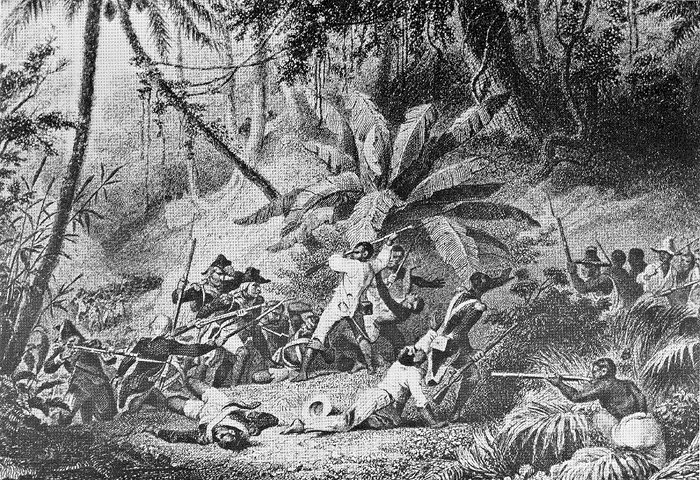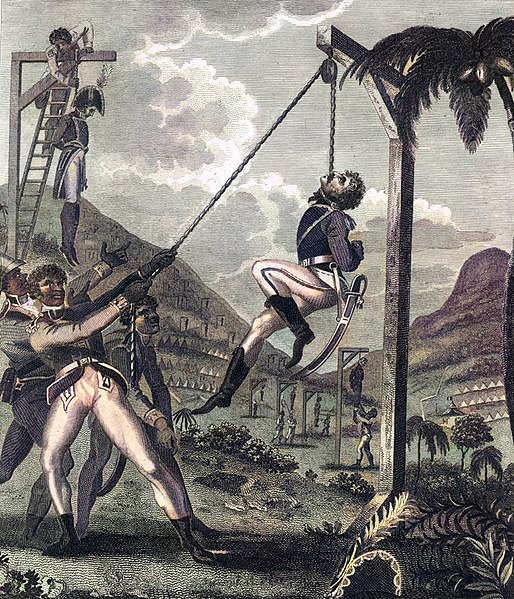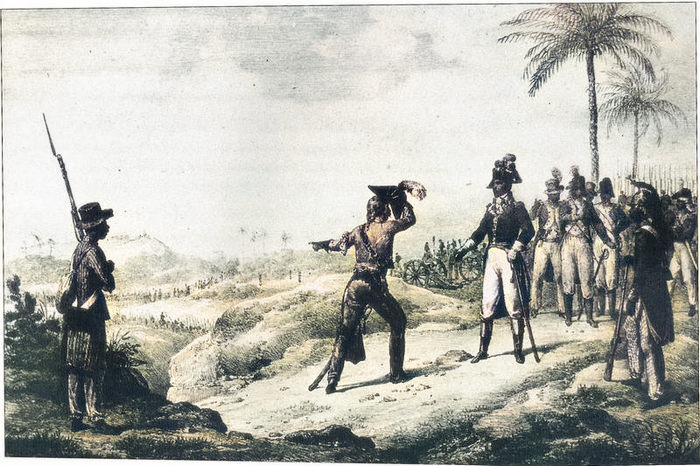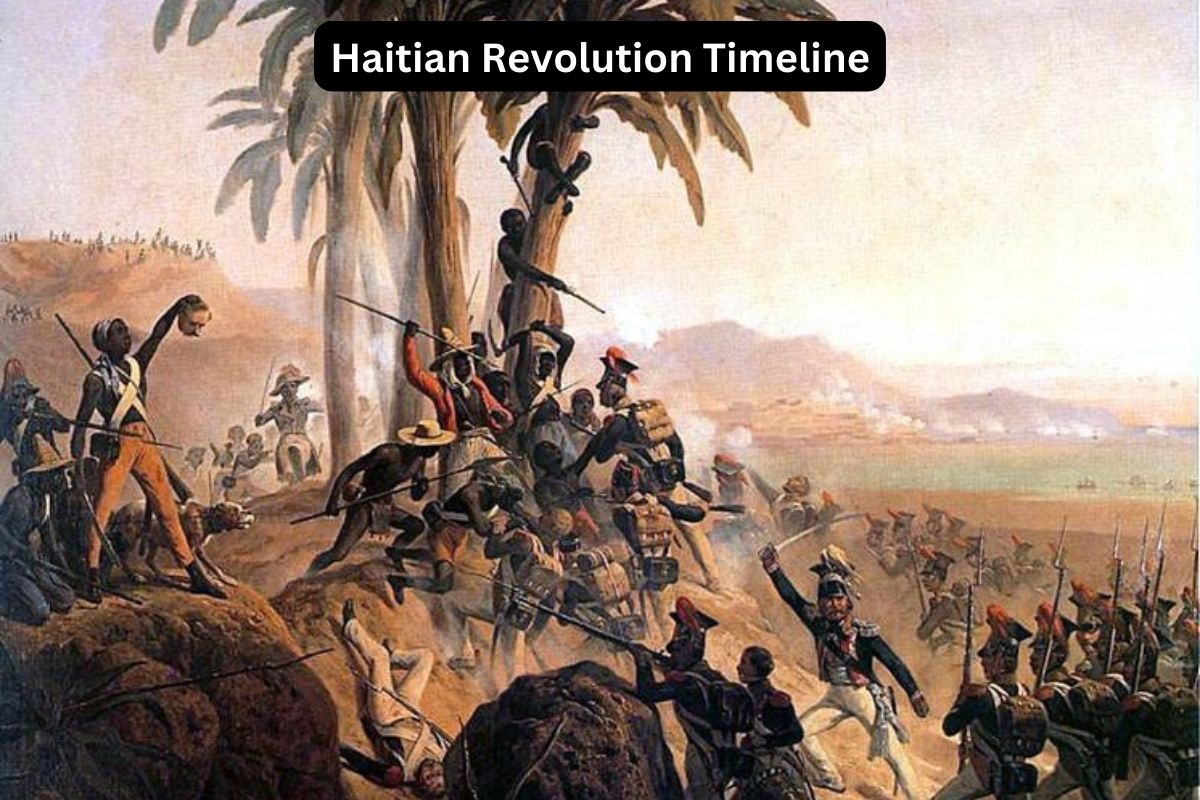The Haitian Revolution, a seminal event in the history of the Americas, stands as a powerful testament to the indomitable spirit of the enslaved and oppressed.
Spanning from 1791 to 1804, this tumultuous period in the colony of Saint-Domingue, now Haiti, witnessed a remarkable transformation as enslaved Africans and their leaders rose against the brutal shackles of slavery, ultimately leading to the birth of the world’s first independent Black republic.
In this article, we delve into the key milestones and pivotal moments that defined the Haitian Revolution, shedding light on the struggles, triumphs, and enduring legacy of a people’s relentless quest for freedom and autonomy.
| Year | Events |
|---|---|
| 1791 | August 14: The revolution began with the Bois Caïman ceremony, a meeting of enslaved Africans in Haiti, led by Boukman Dutty, a Vodou priest. August 22: The rebellion spreads as enslaved people in various plantations across the colony revolt. |
| 1792 | France declared war on Austria, and the French Revolution intensified, leading to uncertainty in Haiti. |
| 1793 | August: A large-scale rebellion led by Toussaint Louverture, a former enslaved person, emerged, aligning with the French Republic against British and Spanish forces that had invaded Haiti. November: Toussaint Louverture proclaimed himself Governor-General of Saint-Domingue and sought to establish a more stable government. |
| 1794 | February: The French government abolished slavery in all its territories, including Saint-Domingue, under the leadership of Maximilien Robespierre. May: Toussaint Louverture declared his loyalty to France while maintaining control over Saint-Domingue. |
| 1801 | Toussaint Louverture issued a new constitution for Saint-Domingue, declaring himself Governor for Life, effectively establishing autonomy from France. |
| 1802 | France, now under the leadership of Napoleon Bonaparte, sent an expedition led by General Charles Leclerc to regain control of Saint-Domingue and reinstate slavery. November: Toussaint Louverture was captured by the French and deported to France, where he died in 1803. |
| 1803 | Resistance against the French continued under the leadership of Jean-Jacques Dessalines and other rebel leaders. November: The French forces were defeated at the Battle of Vertières, marking a significant turning point in the revolution. |
| 1804 | January 1: Jean-Jacques Dessalines declared Haiti’s independence and named it the Republic of Haiti, making it the first independent Black republic in the world. February: The Haitian Revolution officially ended with the defeat of the French and the establishment of the independent nation. |
Timeline of the Haitian Revolution
1791
August 14, 1791: The Haitian Revolution began with the Bois Caïman ceremony. This event took place in the northern region of Saint-Domingue (now Haiti) and marked a critical turning point in the struggle for freedom.
Also Read: Facts About the Haitian Revolution
At this ceremony, enslaved Africans, under the leadership of Boukman Dutty, a Vodou priest, gathered in the forest of Bois Caïman to plan and coordinate a massive uprising against their oppressors. The ceremony was characterized by Vodou rituals and oaths of solidarity among the participants.
August 22, 1791: Just a week after the Bois Caïman ceremony, the rebellion ignited as enslaved people on various plantations across the colony of Saint-Domingue began to revolt.
This uprising quickly spread, with enslaved Africans seizing control of plantations, engaging in acts of sabotage, and fighting for their freedom. The initial phase of the revolution was characterized by a spontaneous and decentralized resistance movement.

1792
This year marked a significant development in the context of the Haitian Revolution due to external factors. In France, the French Revolution was unfolding, leading to political turmoil and changes in leadership.
The situation in Haiti became increasingly uncertain as the revolutionary ideals of liberty, equality, and fraternity inspired many in the colony, including both enslaved and free people of color, to seek greater rights and independence.
1793
August 1793: A significant turning point occurred when a large-scale rebellion led by Toussaint Louverture emerged. Toussaint Louverture, born into slavery but later freed, joined the revolutionary cause and became a prominent leader.
He aligned himself with the French Republic against British and Spanish forces that had invaded Saint-Domingue. Under his leadership, the revolution gained more structure and direction.
November 1793: Toussaint Louverture proclaimed himself Governor-General of Saint-Domingue, effectively becoming the de facto leader of the colony.
He sought to establish a more stable government while continuing to fight for the rights and freedom of the enslaved population. Toussaint’s leadership marked a crucial phase in the Haitian Revolution, as he skillfully navigated the complex political and military landscape.
1794
February 1794: A significant development occurred when the French government, under the leadership of Maximilien Robespierre during the French Revolution, abolished slavery in all its territories, including Saint-Domingue.
This decree was a response to pressure from abolitionist groups and a reflection of the revolutionary principles of liberty and equality. The decision had a profound impact on the Haitian Revolution, as it offered enslaved people a formal declaration of their freedom.
May 1794: Toussaint Louverture, the leader of the enslaved and free Black population in Saint-Domingue, declared his loyalty to France while maintaining control over the colony.
His decision to support the French Republic was partly driven by a desire to secure the rights and freedom of the Haitian population. This move marked a complex phase in the revolution, as Toussaint sought to navigate between the interests of the French government and those of the Haitian people.

1801
Toussaint Louverture issued a new constitution for Saint-Domingue, declaring himself Governor for Life. This constitution, often referred to as the Constitution of 1801, aimed to establish a stable government and formalize the autonomy of Saint-Domingue from France.
Toussaint’s leadership during this period brought relative stability to the colony, though it was not without challenges and conflicts.
1802
1802: The situation in Haiti took a dramatic turn when Napoleon Bonaparte, now in power in France, sent an expedition led by General Charles Leclerc to regain control of Saint-Domingue.
Napoleon aimed to reestablish slavery in the colony and solidify French control over its lucrative sugar and coffee plantations. This marked a significant shift in French policy and set the stage for a renewed conflict in Haiti.
November 1802: Toussaint Louverture, a key figure in the Haitian Revolution, was captured by the French forces and deported to France. This event was a major blow to the Haitian resistance, as Toussaint had been a unifying and strategic leader.
Despite his capture, the struggle for Haitian independence continued under the leadership of Jean-Jacques Dessalines and other rebel leaders.

1803
Resistance Continues: Throughout the year 1803, resistance against the French occupation of Haiti continued under the leadership of Jean-Jacques Dessalines and other rebel leaders.
After the capture and deportation of Toussaint Louverture in 1802, Dessalines emerged as a prominent and charismatic leader who played a crucial role in the final phase of the revolution.
November 1803: One of the most pivotal moments in the Haitian Revolution occurred in November when the French forces, under General Donatien-Marie Joseph de Vimeur, Vicomte de Rochambeau, were defeated at the Battle of Vertières.
This battle was fought near the town of Vertières in northern Haiti and resulted in a decisive victory for the Haitian rebels. The French were forced to withdraw, marking the end of their efforts to reestablish control over Saint-Domingue.
1804
January 1, 1804: Just two months after the Battle of Vertières, on January 1, 1804, Jean-Jacques Dessalines made a historic proclamation. He declared Haiti’s independence and formally named it the “Republic of Haiti.”
This declaration marked the culmination of years of struggle and resistance, making Haiti the first independent Black republic in the world and the second independent nation in the Americas after the United States. This event remains a symbol of the Haitian people’s resilience and determination to secure their freedom.
February 1804: The Haitian Revolution officially concluded with the defeat of the French and the establishment of the independent nation of Haiti.
The newly formed republic faced numerous challenges, including economic devastation caused by years of conflict and the need to establish a stable government. However, the successful culmination of the revolution represented a historic achievement in the fight against slavery, colonialism, and oppression.
These years marked the final phase of the Haitian Revolution, from the crucial victory at the Battle of Vertières in 1803 to the proclamation of Haiti’s independence in 1804.
The establishment of the independent Republic of Haiti was a momentous event in world history and a testament to the determination and resilience of the Haitian people in their struggle for freedom and self-determination.
